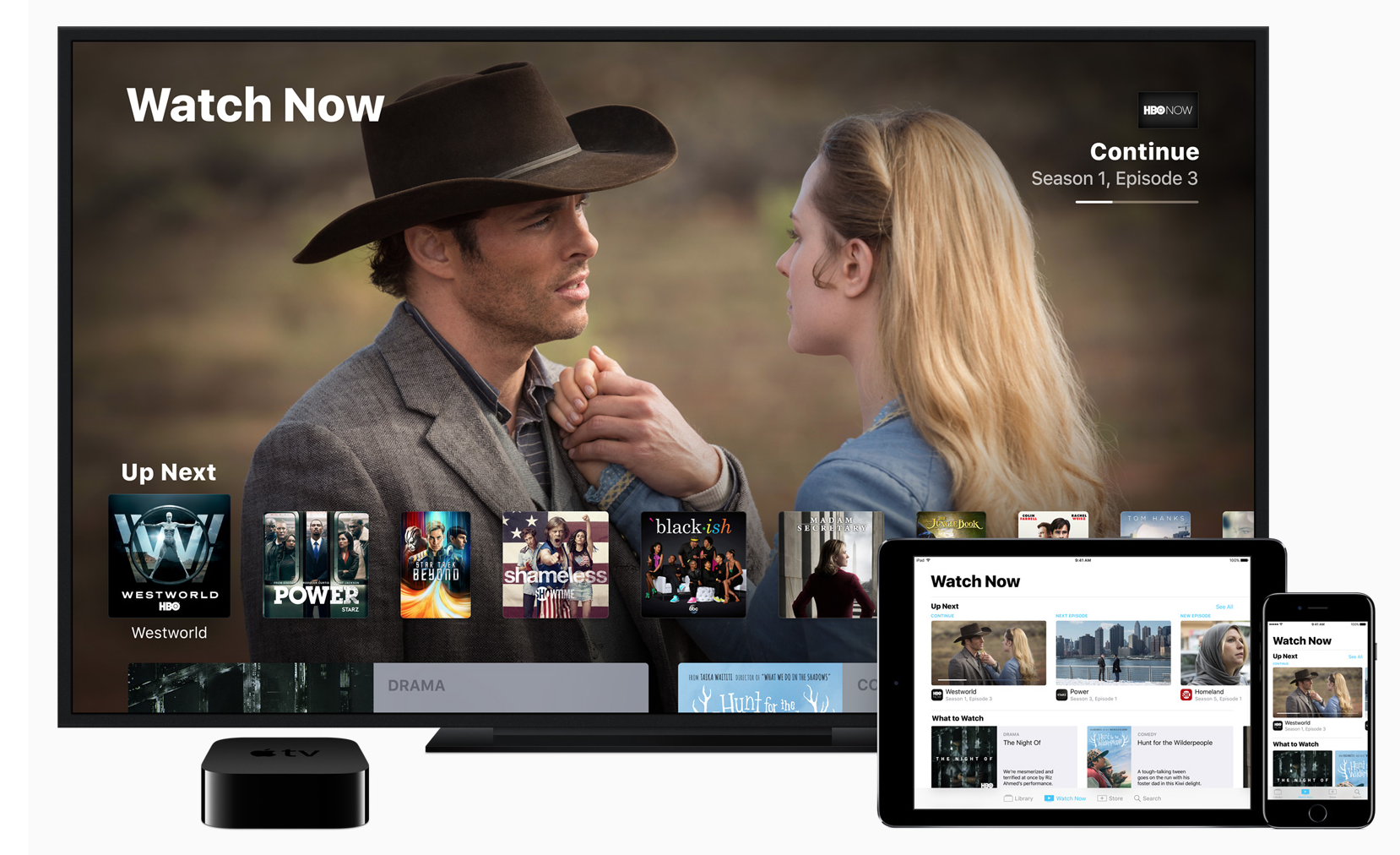Today Apple released iOS 10.2 which, among some other features, includes support for Cable TV (and other) provider Single Sign-on and a new application from Apple called TV. Unfortunately there is a big issue with their support for single sign-on providers:
Still missing are a number of major services like Spectrum, Google Fiber, AT&T U-verse, Verizon Fios, and Comcast Xfinity, plus the main competition for Sling, Sony's PlayStation Vue. -- appleinsider [Author's Note: Time Warner Cable and Insight are also missing]
What does this mean to you depends on whether or not you are currently paying a "traditional" provider for cable or satellite Television access. If you are, hopefully you are paying one of these providers:
- CenturyLink Prism
- DirecTV (DirecTV Now doesn't count)
- Dish
- GTA (in Guam)
- GVTC Communications
- Hawaiian Telecom
- Hotwire
- MetroCast
- Service Electric Cablevision
- Sling TV
If instead you have what most people in the United States have, then you're in for a bad experience. I personally have AT&T Uverse (the parent company of DirecTV) and my experience is what is most likely indicative of the experience you'd have...
The Issue
Apple has been touting the TV app since the announcement on October 27th where they first showed off the new capability. The promise is a unified experience across all of your streaming applications so that you can easily find the content you want to watch. This includes an "Up Next" feature where the most recent, unplayed, episode of your show is waiting for you to watch. There's only one issue:
it doesn't work.
The Apple TV TV application requires single sign-on from your provider in order to authenticate the various streaming applications and include their content within the TV app. Further, the application itself needs to support the TV app in order to provide its content through it. Finally, the PROVIDER of your service for the application in question ALSO needs to support single sign-on for the Apple TV itself. So, to recap, in order to see content in the Apple TV TV application, you must:
- Have a provider that supports single sign-on
- Have an application that supports single sign-on
- Have an application that supports the TV app
If any one of these three is false, then you will not see the content from that application within the TV app.
There is an exception to this...if the application in question has a direct consumer billing relationship, then they do not need to meet the Television Provider criteria.
For example: HBO NOW is supported fully within the TV app. This is because HBO is billing you directly for the use of the application and the application supports the TV app. However, HBO Go does not work. This is because you most likely do not have a Television Provider that supports single sign-on and even if you do, it appears the HBO Go application doesn't support the TV app.
What does this mean?
My family watches 99.9% of our content streamed. If it's not being streamed over an Apple TV, it's been DVR'd within our AT&T Uverse box and we're streaming it time shifted from when it aired.
The various "wired" providers are dragging their feet in providing support for streaming solutions like the TV application, because they're concerned about losing customers to streaming. Guess what? Dragging your feet in providing customers what they clearly are demanding is just going to push them faster to the alternatives.
I already signed up for DirecTV Now ($35 / month, pre-paid for 3 months, so I get a free $149 Apple TV). The quality and interface of the solution is BETTER than my AT&T Uverse experience. Sling TV is already supported under the TV application (though a friend of mine who has it states that even though it's a single sign-on provider and he has HBO and local channels through it, the apps aren't working (see point #3 above)).
Customers want streaming and if the traditional providers aren't willing to play ball with folks like Sling, Netflix, Apple TV, Chromecast, and Hulu, then they're going to get run over. As it stands, AT&T's lack of support for single sign-on at launch is probably going to get me to invest in Hulu and/or Sling TV and just drop my service.
Conclusion
To be honest, this isn't really Apple's fault (other than releasing an application they knew would have this impact on their customers). Apple's ecosystem around tvOS has always been that application authors have to support the features they are delivering. This was true of Universal Search and it's true of the TV application and Single sign-on. Be upset with Apple for delivering a crappy experience. Be upset with your cable / satellite provider for not supporting Apple Single sign-on and be upset with the application authors for not supporting the TV app. There's plenty of blame to go around.
